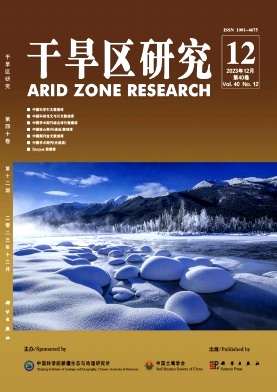Sustainable Development Capability in the Huangshui River Basin in Qinghai Province Based on Analyzing the Ecological Footprint
Q3 Environmental Science
引用次数: 0
Abstract
Based on the ecological footprint theory and calculation method,in this paper the ecological footprint and ecological carrying capacity in the Huangshui River Basin in Qinghai Province during the period from 2000 to 2005 are estimated.The results show that the per capita ecological footprint was gradually increased from 1.426 5 hm2 in 2000 to 1.659 6 hm2 in 2005,the per capita ecological carrying capacity was decreased from 1.116 8 hm2 in 2000 to 1.056 9 hm2 in 2005,the per capita ecological deficit was increased from 0.443 8 hm2 in 2000 to 0.729 5 hm2 in 2005,and the ecological pressure index was increased from 1.45 in 2000 to 1.78 in 2005.All these facts reveal a downtrend of ecological status.It is predicted that the per capita ecological deficit and the ecological pressure index will be increased to 0.943 2 hm2 and 2.07 respectively in 2010,and the ecology in the Huangshui River Basin will be in an extreme insecurity if the current development mode is not changed.Moreover,with the increase of diversity index of ecological footprint from 1.03 in 2000 to 1.29 in 2005,the ecological footprint of ten thousand yuan GDP was decreased from 2.702 3 hm2 in 2000 to 2.215 6 hm2 in 2005,the development capacity was increased from 1.46 in 2000 to 2.14 in 2005,and it is predicted that the development capacity will be increased to 2.71 in 2010.Some measures and countermeasures are put forward for achieving sustainable development in the Huangshui River Basin based on the sustainable development theory.基于生态足迹分析的湟水河流域可持续发展能力研究
基于生态足迹理论和计算方法,对青海省湟水河流域2000 - 2005年生态足迹和生态承载力进行了估算。结果表明:人均生态足迹由2000年的1.426 5 hm2逐渐增加到2005年的1.659 6 hm2,人均生态承载力由2000年的1.116 8 hm2逐渐减少到2005年的1.056 9 hm2,人均生态赤字由2000年的0.443 hm2逐渐增加到2005年的0.729 5 hm2,生态压力指数由2000年的1.45增加到2005年的1.78。这些事实都揭示了生态状况的下降趋势。预测2010年湟水河流域人均生态赤字和生态压力指数将分别增加到0.943 2 hm2和2.07 hm2,如果不改变目前的发展模式,湟水河流域的生态将处于极度不安全状态。随着生态足迹多样性指数从2000年的1.03增加到2005年的1.29,万元GDP生态足迹从2000年的2.7023 hm2减少到2005年的2.215 hm2,发展能力从2000年的1.46增加到2005年的2.14,预计到2010年发展能力将增加到2.71。基于可持续发展理论,提出了湟水河流域实现可持续发展的措施和对策。
本文章由计算机程序翻译,如有差异,请以英文原文为准。
求助全文
约1分钟内获得全文
求助全文
来源期刊

干旱区研究
Environmental Science-Water Science and Technology
CiteScore
2.50
自引率
0.00%
发文量
4294
期刊介绍:
 求助内容:
求助内容: 应助结果提醒方式:
应助结果提醒方式:


